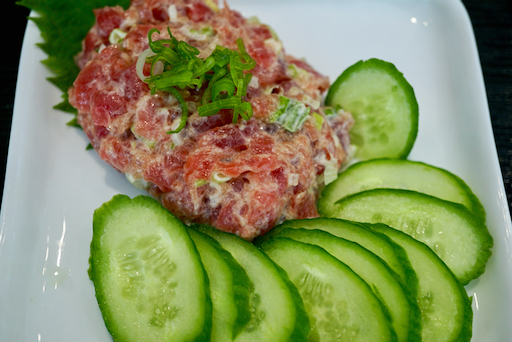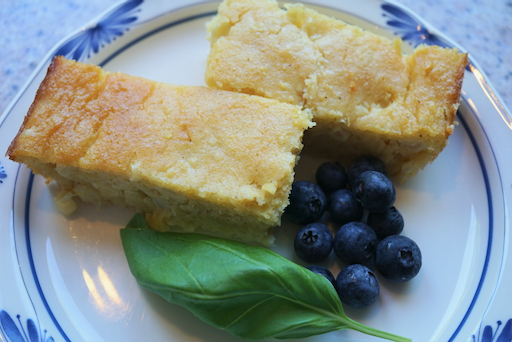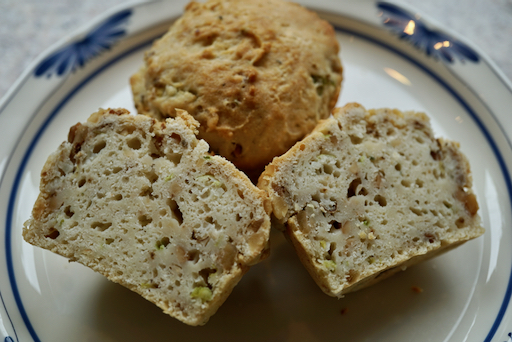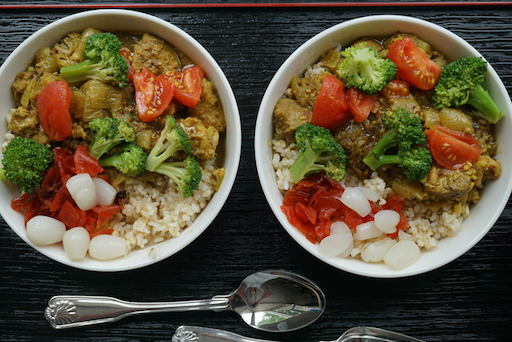My wife really likes the
chicken kara-age I make. I have not made it for some time. One weekend, we got chicken thighs specifically to make this dish but somehow I didn’t get around to it over the weekend. I just prepared the chicken (removed the bone and cut the meat into bite sized pieces). I marinated it in soy sauce, mirin, sake, sesame oil, grated garlic and ginger in a Ziploc bag. I thought, maybe, I could fry it up one weekday evening. But I did not have the energy or time to do that. So, instead, I baked it in our toaster oven on convection mode. We have baked such dishes as
chicken wings before in the toaster oven instead of frying them. This version of kara-age was not as good as deep fried but good enough. I served this as an appetizer with cucumber and tomato salad.
Ingredients:
4 bone-in, skin-on chicken thighs, excess fat removed and bone removed, cut into bite sized pieces with some skin on.
1/4 cup "Katakuri-ko" potato starch
Marinade:
4 tbs soy sauce
2 tbs sake
2 tbs mirin
1/2 tsp grated garlic (from tube)
1/2 tsp grated ginger (from tube)
2 tsp dark sesame oil
Hot sauce such as Sriracha to taste
Directions:
Place the marinade and the chicken in a Ziploc bag, massage, remove the air, seal and let it marinate overnight in the refrigerator.
Remove the chicken, blot off the excess marinade and dredge with the potato starch shaking off excess starch.
Preheat the toaster oven to 380F (I could have used a higher temperature like 400F, but I was afraid it might burn since the marinade contained mirin).
I covered the baking tray with aluminum foil (still the chicken stuck, I could have used parchment paper), lightly oiled, placed the chicken and baked for 25-30 minutes (shorter with higher temp may have been better).
This was not bad but it may have been better if I could have cooked it at a higher temperature. I didn’t because of the sugar in the mirin, it could easily burn. Maybe, next time, I may just use soy sauce and sake in the marinade omitting the mirin.
In any case, this was good especially weekday night and it heated up nicely in the toaster oven in the toasting mode next day.



















































